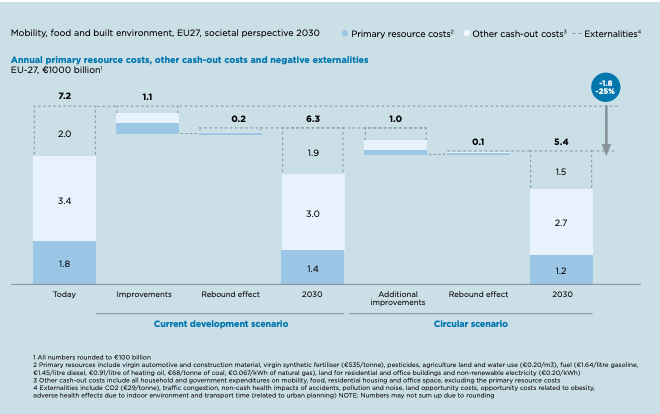Ever since the industrial revolution entered into full force, humankind began following a uniform path of consumption and production. This never-changing course consists of taking raw materials and transforming them into different goods that are later used, sold, and ultimately, turned into unconsciously managed and discarded waste.
Putting a stop to industrial waste is the circular economy – a unique model intentionally designed to regenerate and improve the industry performance and oppose the volatility caused by the ever-changing business climate.
The circular economy attains both strategic as well as operational benefits and combines a massive potential for value creation in the economical, societal, environmental, and business fields.
Environmental Benefits of the Circular Economy
Here are the main advantages and benefits stemming from the implementation of the circular economy.
1. Greenhouse Gas Emissions Reduction
One of the main circular economy goals is achieving a positive impact on the ecosystem, thus fighting the uncontrolled exploitation of natural resources used by humans. This type of economy boasts a huge potential in lessening the use of raw materials and greenhouse gas emissions. Moreover, it decreases the negative externalities, a consequence of the linear model, whilst optimizing agricultural productivity at the same time.
Regarding greenhouse gas reduction, the circular economy can be quite helpful, as it is designed to rely on the use of renewable energy, a concept far less polluting compared to the use of fossil fuels. Thanks to this dematerializing and reusing cycle, production processes require fewer materials in providing functional and solid products. Another benefit of the circular economy is its ability to reuse and repurpose production residues, and as many times as possible.
Conclusively, the favored circular economy choices are non-toxic and energy-efficient materials. Even more, the model carefully preselects its desired recycling and manufacturing processes, further contributing to the reduction of greenhouse gas emissions.
In fact, a study from the Ellen MacArthur Foundation found out that the development path of a circular economy can cut carbon dioxide emissions by half by 2030.

2. Resilient and Healthy Soils
The circular economy aims to deduct the extremely high level of natural ecosystems and land exploitation. This will mainly be achieved through the improvement of the farming system, in a way that brings essential nutrients back into the soil. Of course, the most important role in this scheme will be the anaerobic composting processes.
By accomplishing this, the ‘waste’ will be returned into the soil, resulting in fewer residues to cope with. Likely the greatest benefit of the circular economy is its ability to balance the ecosystems in production whilst making the soil far more resilient and viable. As a matter of fact, the improvement of the soil is beyond useful for the economy and nature, given that soil degradation is valued at an estimated worth of $40 billion annually.
According to a study conducted by Ellen MacArthur Foundation, a circular economy model which would be implemented in the food systems in Europe could potentially lessen the use of artificial fertilizer by 80%. This could contribute to the balancing of soils naturally.
3. Fewer Environmental Threats
Through implementing the principles of the circular economy, the negative externalities such as air pollution and water, land, and soil contamination are managed far better. The same can be also said of controlling undesirable climate changes and the emission of toxins.
4. Enlarged Economic Growth Potential
Separating resource consumption from economic growth is highly relevant to execute. The revenues increase occurring due to new circular activities, in combination with non-expensive production – reusing and optimizing dissembled materials and products – has the capacity to increase the overall gross domestic product worth. Consequently, the rise of GDP will also boost the economy as a whole.
5. Preserving More Resources
The circular economy model has the capability to conduct a higher amount of material savings, which can reach up to 70%, compared to the process of extracting raw materials, seen in the linear economy model. Considering that the overall demand for materials will continue to rise, mostly as a result of the increase of middle classes and the global population, the circular economy will demand far fewer materials to use.
The circular economy mainly avoids recycling and skips landfills, all the while focusing on making the material cycles more continuous. When it comes to the environmental aspect, the circular economy also circumvents greater pollution caused by the use of new materials.
6. Brand New Profit Opportunities
In some cases, lower input costs can create completely new and profitable streams, ultimately obtained by businesses eager to become part of the circular economy model.
In such a climate, profit opportunities rise, as does the opportunity to access new markets and cut unnecessary costs, all thanks to the new model of reducing both energy and waste. Last but not least, the application of circular economy models will also assure steady supply continuity for growing industries and individual businesses.





